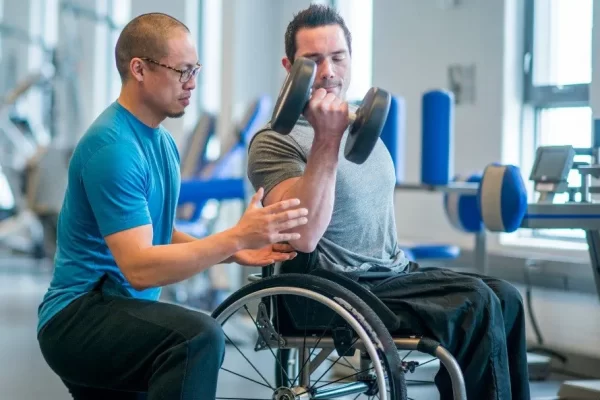Adaptive physical therapy plays a crucial role in enhancing the quality of life for individuals with disabilities. This specialized form of therapy focuses on designing exercises and rehabilitation programs that are specifically tailored to meet the unique needs of each patient. With the right approach, adaptive physical therapy can significantly improve mobility, strength, and independence, offering a pathway to more active and fulfilled lives.
Understanding Adaptive Physical Therapy
Adaptive physical therapy is a subset of physical therapy that aims to address the specific physical challenges faced by individuals with disabilities. This could include impairments due to congenital conditions, injuries, or illnesses that affect mobility and physical function.
The Goals of Adaptive Physical Therapy
The primary goals of adaptive physical therapy are to enhance function, increase independence, and improve the overall quality of life. This is achieved through personalized treatment plans that focus on:
- Enhancing muscle strength and coordination
- Increasing range of motion
- Improving balance and stability
- Facilitating motor skills and mobility
- Reducing pain and discomfort
Personalizing Treatment Plans
Each individual’s needs are unique, and as such, treatment plans must be customized to be effective. Physical therapists specializing in adaptive therapy use a comprehensive evaluation process to determine the best approach for each patient.
Assessment and Evaluation
The initial assessment involves a detailed evaluation of the patient’s physical capabilities, limitations, and overall health status. This assessment may include, but is not limited to, tests of flexibility, strength, endurance, and motor function.
Setting Realistic Goals
Goals are set based on the assessment findings, taking into account the individual’s personal objectives. These goals are SMART: Specific, Measurable, Achievable, Relevant, and Time-bound. They serve as a guide for both the therapist and the patient throughout the rehabilitation process.
Adaptive Techniques and Equipment
Adaptive physical therapy utilizes a variety of techniques and equipment to aid in the rehabilitation process. These tools are designed to assist individuals in performing exercises safely and effectively, despite their limitations.
Specialized Equipment
Equipment such as wheelchairs, walkers, and adaptive exercise machines are often used to support patients as they perform various exercises. This equipment is specifically designed to accommodate physical disabilities and provide the necessary support during therapy sessions.
Therapeutic Exercises
Exercises are carefully chosen and adapted to meet the needs of each patient. These exercises might include water therapy, which reduces strain on the body, or the use of resistance bands, which can be adjusted to varying levels of difficulty.
The Role of Technology in Adaptive Physical Therapy
Technology plays a significant role in enhancing the effectiveness of adaptive physical therapy. Innovative solutions such as virtual reality, robotics, and wearable devices have revolutionized the way physical therapy is delivered to individuals with disabilities.
Virtual Reality (VR) and Augmented Reality (AR)
VR and AR technologies are increasingly used in adaptive physical therapy to create immersive, interactive environments for patients. These technologies help simulate real-life activities and scenarios, providing a safe platform for patients to practice and improve their skills.
Robotics
Robotic devices and exoskeletons provide support and assistance during exercises, allowing patients to perform movements that would otherwise be difficult or impossible. These technologies enhance the intensity and frequency of therapy sessions, leading to better outcomes.
The Importance of Professional Guidance
Working with a qualified physical therapist is essential for safely and effectively implementing an adaptive physical therapy program. Professionals in this field are trained to understand the complexities associated with various disabilities and how to manage them through therapeutic exercises.
For residents in or around the Mountain Top area, seeking expertise in adaptive physical therapy, consider contacting mountain top physical therapy. These professionals can provide personalized care tailored to meet the specific needs of individuals with disabilities.
Conclusion
Adaptive physical therapy is a transformative approach that empowers individuals with disabilities by enhancing their physical abilities and overall quality of life. Through customized exercises, the use of specialized equipment, and the integration of cutting-edge technology, adaptive physical therapy offers a pathway to greater independence and wellbeing. Whether recovering from an injury or managing a chronic condition, adaptive physical therapy provides the tools and support necessary for individuals to reach their potential and lead active lives.

